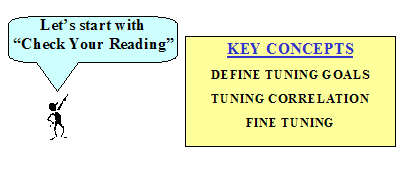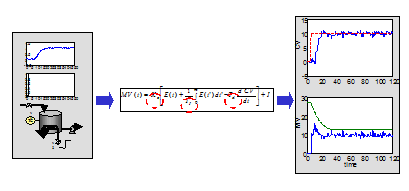

Chapter 9 PID Controller Tuning For Dynamic Performance
Check Your Reading Study Questions Thought Questions
The questions will be categorized according to the key concepts concepts in the chapter.
| Control Performance Measures | Dimensional Analysis |
| Fine Tuning |
 |
 |
| Check Your Reading |
Solidify the Concepts |
| 9.1 Deviation of the controlled variable (CV) from its set point (SP) is an important performance measure because... |
Performance Measures |
| 9.2 The rate of change of adjustments to the manipulated variable (MV which is usually a valve) made by a feedback controller... |
Performance Measures |
| 9.3 In the context of controller tuning, "robustness" means... |
Performance Measures |
| 9.4 When finding the optimum values for tuning constant, we can find KC first, then fix KC and determine TI, and finally, fix the first two and determine Td. |
Fine Tuning |

| 9.5 Errors in models used for tuning occur... |
Fine Tuning |
| 9.6 The Ciancone PID tuning correlations are applicable to processes that... |
Fine Tuning |
| 9.7 If you knew the model perfectly and you could adjust the manipulated variable without limits, the best PID controller tuning would be... |
Fine Tuning |